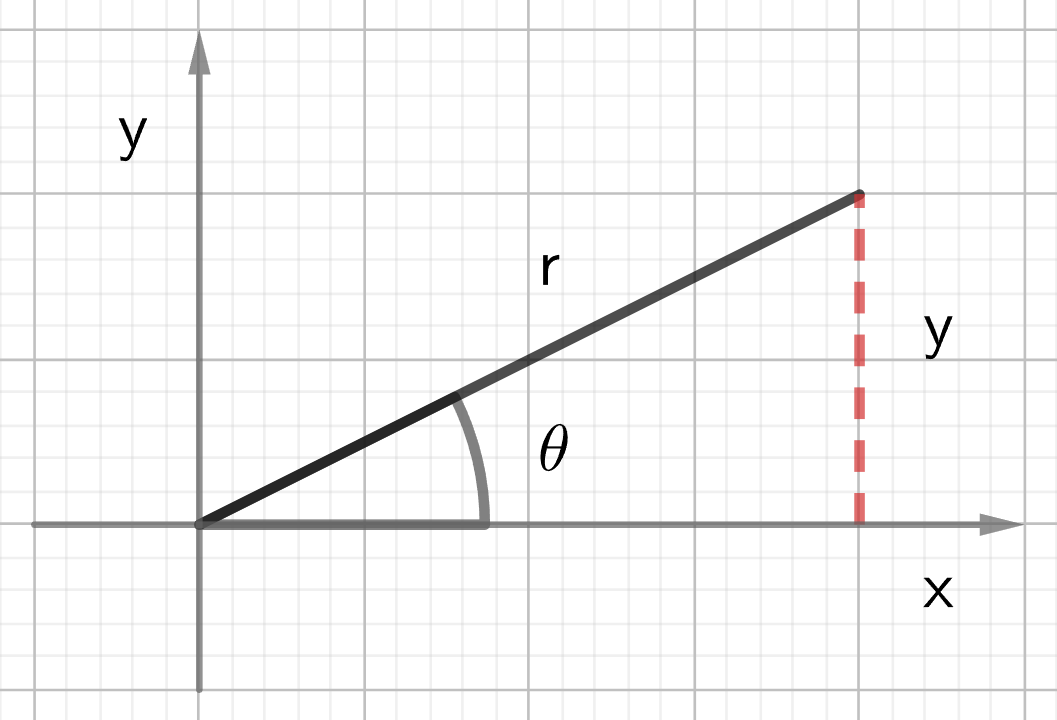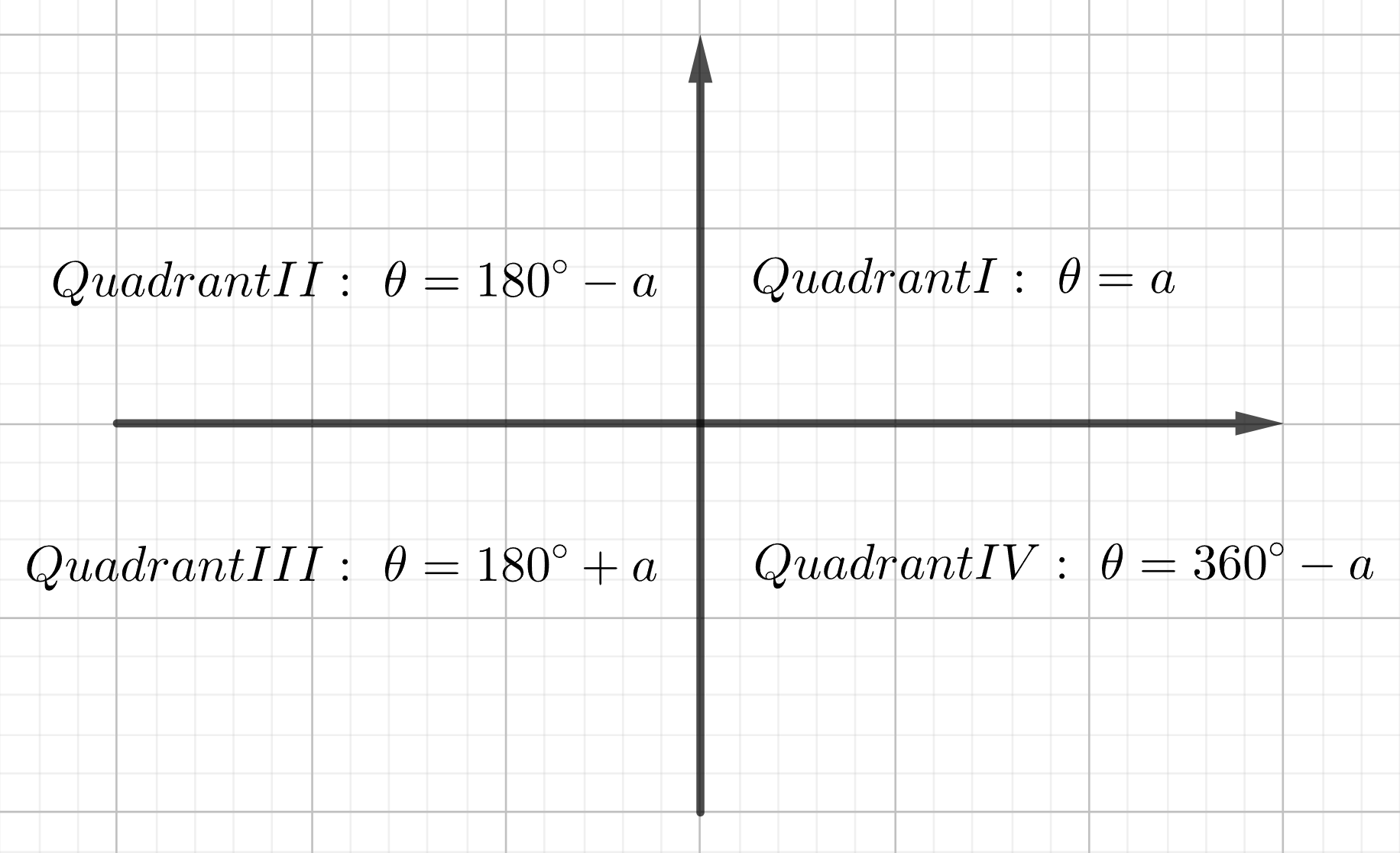2.3. Practice Sets: Vectors and Scalars; Vector Components
Chapter Equations

Based on the right-angle triangle in the diagram above:
[latex]x = r \cos \theta[/latex]
[latex]y = r \sin \theta[/latex]
[latex]\alpha[/latex] – the reference angle is, by definition, the shortest angular distance from the terminal side of the angle to the x-axis.
[latex]\theta[/latex] – the angle in standard position is, by definition, the angle positioned with the vertex in the origin of axes and the initial side on the positive part of the x-axis. [latex]null[/latex]
If the Cartesian coordinates are known, the reference angle [latex]\alpha[/latex] can be calculated by using the inverse of tangent:
[latex]\alpha = \tan^{-1} \left(\frac{|y|}{|x|}\right)[/latex]
The Pythagorean theorem states that in a right-angle triangle:
[latex]r^2 = x^2 + y^2[/latex]
The relationship between the angle in standard position and the reference angle is:

Try it!
- A vector v is given. The horizontal component of v is vx, while the vertical component of v is vy. Vector v makes an angle with the horizontal of [latex]\alpha[/latex]. Which equation helps us determine vx?
- A vector v is given. The horizontal component of v is vx, while the vertical component of v is vy. Vector v makes an angle with the horizontal of [latex]\alpha[/latex]. Which equation helps us determine vy?
- Under which circumstances can we use the Pythagorean theorem to find the resultant of two vectors?
Practice
- Find the x and y components of a force vector [latex]\text{F = }35 \text{ N}[/latex], positioned [latex]56 \text{°}[/latex] north of west.
Answer:[latex]-19.6^\circ N,\quad 29.0^\circ N[/latex] - Find the x and y components of a velocity vector [latex]\text{v = }20 \text{ m/s}[/latex], positioned [latex]25 \text{°}[/latex] south of east.
Answer:[latex]18.1 \text{ m/s}, \quad -8.5 \text{ m/s}[/latex] - Sketch and find the displacement vector in standard position given the x-component is [latex]+32.2 \text{ cm}[/latex] and the y-component is [latex]–22.2 \text{ cm}[/latex].
Answer:[latex]39.1 \text{ cm}, \quad 325.4^\circ[/latex] - Sketch and find the displacement vector in standard position given the x-component is [latex]–45 \text{ cm}[/latex] and the y-component is [latex]–75 \text{ cm}[/latex].
Answer:[latex]87.5 \text{ cm}, \quad 239^\circ[/latex]
Challenge Question(s)
Text Versions of the Challenge Question(s)
- A ball travels during a game to a point positioned 25 m east and 54 m south. What is the magnitude of the vector that describes how far the ball has traveled from its starting point?
Answer: [latex]59.5 \text{ m}[/latex]
Image Attributions
- Figure 2.4 – 2.5: Created with Geogebra and licensed under CC-BY-NC-SA 3.0.

